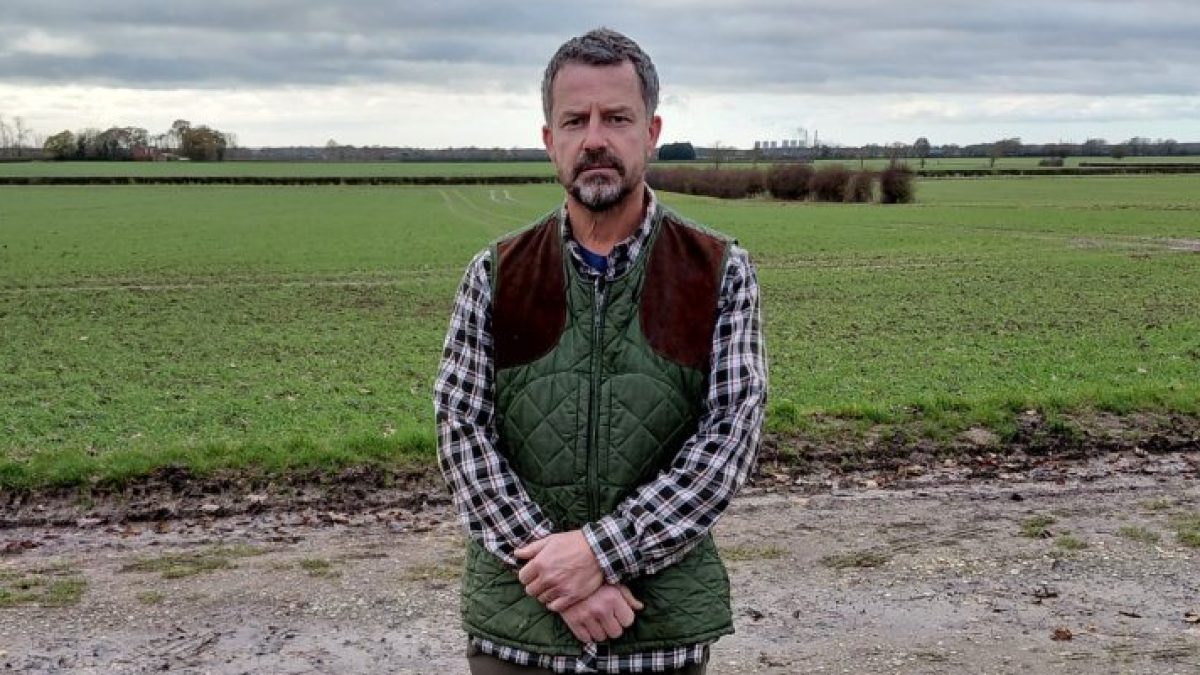Tillbridge Solar Farm is one of several large sites planned in Lincolnshire, which the Government says will help provide clean energy to power the equivalent of over 7.5 million homes
When Simon Skelton moved into his home 21 years ago it was in the hope of enjoying the Lincolnshire countryside.
But the 56-year-old says he now faces being “totally surrounded” by panels up to 15-ft high stretching across more than 10,000 acres of local land as part of Government plans to boost Britain’s solar energy.
“It will be highly intrusive. We live in the country for that reason – to be in the countryside, not in fields full of cheap, Chinese plastic, glass infrastructure that will ruin our family life and make us unable to sell,” he told The i Paper.
He fears five huge new solar farms, with panels the height of a double-decker bus, being built near his home could reduce its value by up to 25 per cent.
West Burton, one of the decommissioned coal-fired power stations that will receive the solar energy, is visible in the distance across the flat plains next to Mr Skelton’s home where the panels will be installed.
Developers and the Government say the farms, including the Tillbridge Solar Project, which would be the UK’s largest, will power hundreds of thousands of homes and provide jobs.
Lincolnshire is known as the breadbasket of Britain, with around 30 per cent of the UK’s vegetables and 18 per cent of its poultry produced in the county.
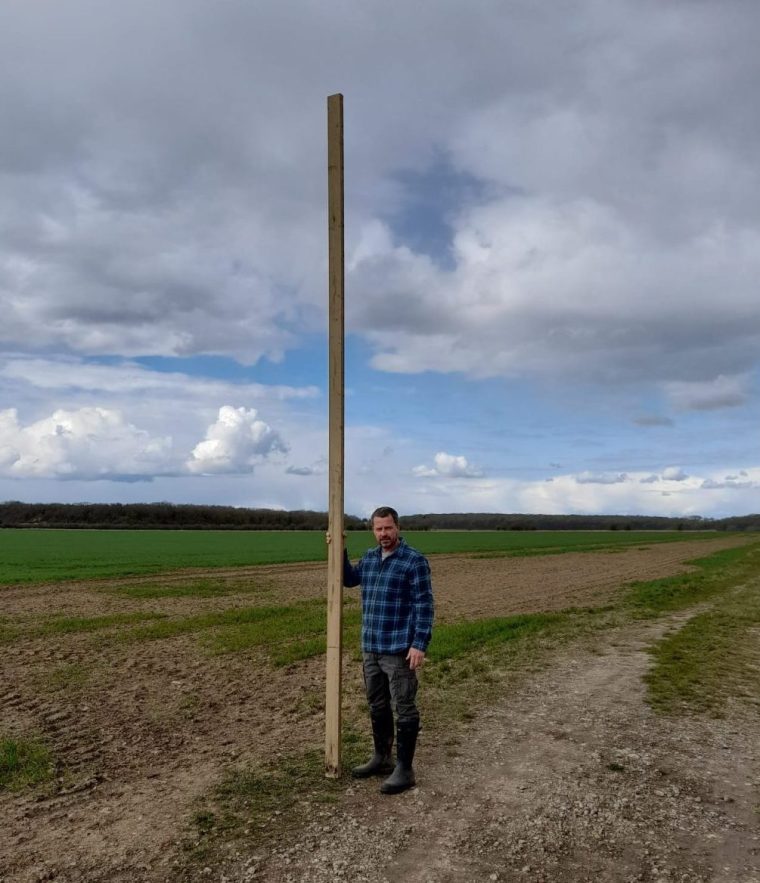 Mr Skelton holding a pole which indicates the size of the 15-ft solar panels that will be built on land next to his home (Photo: Simon Skelton)
Mr Skelton holding a pole which indicates the size of the 15-ft solar panels that will be built on land next to his home (Photo: Simon Skelton)
But Mr Skelton and others in the area say it will do nothing for energy security – and make food security more of a problem.
“It’s a hellish blight on the landscape for very little gain in energy. It’s absolutely ludicrous,” said Mr Skelton, who is part of the 7,000 Acres campaign group.
Since Labour took power last year, it has approved 17 nationally significant clean energy infrastructure projects, including seven large solar farms in Lincolnshire.
The Government says these will provide enough clean energy to power the equivalent of over 7.5 million homes.
May’s local elections saw Reform take over control of Lincolnshire County Council with the local authority’s new leader, Sean Matthews, wasting no time in spelling out his opposition to central government’s solar plans.
The Reform UK councillor has vowed to “lay down in front of bulldozers” to stop the infrastructure being installed across Lincolnshire farmland, with discontent about the plan “front and centre” of emails he receives from constituents.
 A map of the area with areas in pink highlighting where the new solar farms will be located (Photo: Simon Skelton)
A map of the area with areas in pink highlighting where the new solar farms will be located (Photo: Simon Skelton)
“Ed Miliband is literally trying to turn Lincolnshire into a wasteland of solar panels,” he claimed.
“That is what my constituents, the people that live in Lincolnshire, are always talking about, it’s heartbreaking. They are beside themselves, distraught.”
He says he’s exploring the prospect of judicial reviews to the Government plans.
While he insists “there is space” for solar in a Reform Government’s energy policy, he believes the panels should “probably” be confined to people’s homes.
“I will do everything I possibly can to delay and stop these plans so that when we become the government … whenever that is, we will stop them straight away,” Matthews said.
 Reform Councillor Sean Matthews, leader of Lincolnshire County Council, has vowed to ‘lay down in front of bulldozers’ to stop the solar farms (Photo: Lincolnshire County Council)
Reform Councillor Sean Matthews, leader of Lincolnshire County Council, has vowed to ‘lay down in front of bulldozers’ to stop the solar farms (Photo: Lincolnshire County Council)
The Government says families are still feeling the impact of the UK’s reliance on volatile global gas markets, which helped cause the cost of living crisis.
Clean, homegrown power that Britain controls is the “only way to protect billpayers from future price shocks”, Ed Miliband’s Department of Energy Security and Net Zero say.
Lincolnshire has been picked to locate the solar farms because of its grid capacity, according to trade body Solar Energy UK.
“In that area there are a number of large, coal-fired power stations which shut down, so are no longer generating power,” said Chris Hewett, the group’s chief executive.
“Clearly, there’s capacity in the grid in that area. So what you’re seeing is different forms of energy generation plugging into that grid.
“It’s an efficient way of generating power for the country, because otherwise you’re going to be putting it somewhere else and creating other network infrastructure.”
Although defunct, the coal-fired power stations can still transmit solar-produced energy into the national grid.
Hewett also points to benefits such as solar being the cheapest form of electricity generation.
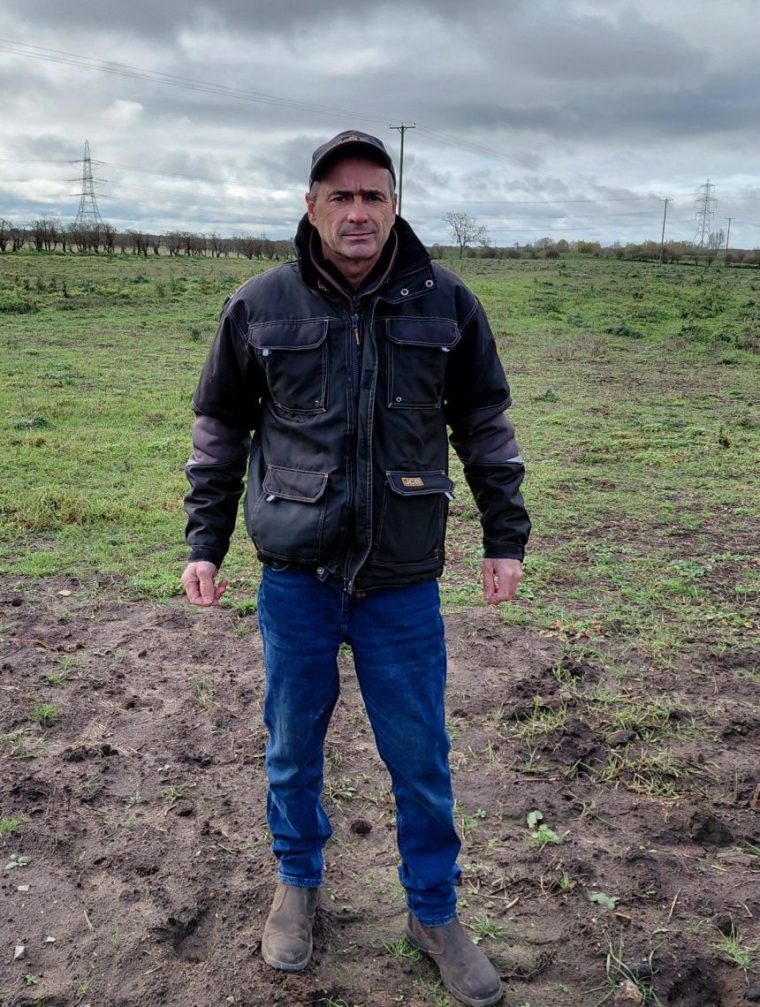 Nick Hill, a farmer who farms near the village of Marton, said cables being laid across his land will affect his work (Photo: Joe Duggan/The i Paper)
Nick Hill, a farmer who farms near the village of Marton, said cables being laid across his land will affect his work (Photo: Joe Duggan/The i Paper)
And while panels on homes are “fantastic”, for the greatest number of people to benefit renewables must go to the national grid as well, he argues, adding any incoming government planning to scrap the farms could face a legal challenge.
The rise of renewables hit a historic turning point when wind and solar energy overtook coal as the world’s leading source of electricity in the first half of this year, according to recent data,
China and India were largely responsible for the surge, while the US and Europe relied more than previously on fossil fuels, global energy think-tank Ember revealed.
Environmentalists have urged Rachel Reeves to prioritise reducing electricity bills in next week’s Budget.
Amid a backlash, the Government has vowed people living near new electricity pylons as part of a “Great Grid Upgrade” will have £2,500 slashed from their energy bills over the next 10 years.
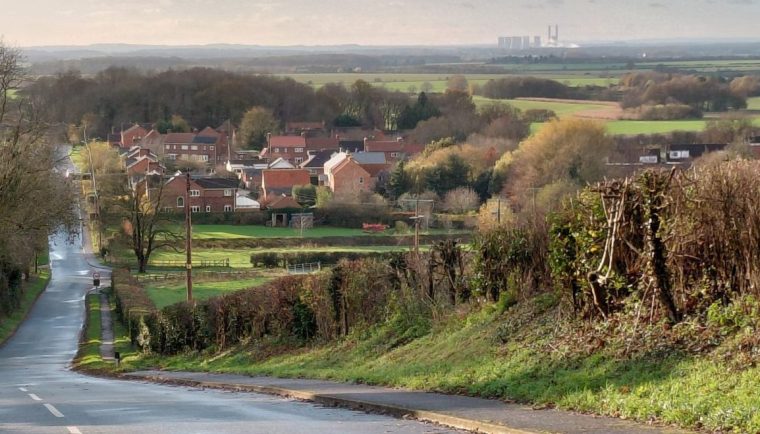 Glentworth is one of the villages close to the Tillbridge Solar Project, which would be the UK’s largest solar farm (Photo: Joe Duggan/The i Paper)
Glentworth is one of the villages close to the Tillbridge Solar Project, which would be the UK’s largest solar farm (Photo: Joe Duggan/The i Paper)
For people living near the new solar farms, the Government is consulting with developers on benefits such as funding for new education schemes, grassroots football pitches or better transport links.
But the plans to scale up Britain’s solar farms have met local opposition in adjoining villages around Lincolnshire, where signs from campaign group 7,000 Acres say “No to solar farms on UK farmland”.
Jackie Brockway, the Conservative leader of West Lindsey District Council, said people were “very supportive” of clean and sustainable energy.
“But in the case of Lincolnshire, we’re really the food producers for the nation,” she said.
“They’re taking large swathes of food-producing land out of commission at a time when there is political instability in Europe. There are different ways to heat our country.”
 Hill is concerned about the loss of land to solar farms (Photo: Joe Duggan/The i Paper)
Hill is concerned about the loss of land to solar farms (Photo: Joe Duggan/The i Paper)
Nick Hill, 56, bought his 12-acre slot of land near Marton in 2022, where potatoes are due to be grown in the coming months.
But solar cables due to be built across his land would “wreck the farm” and jeopardise planning permission for new buildings, he fears.
“If we can’t build on the top of these cables, it’s going to be a massive impact on our farm,” he said.
“As a first-generation farmer, it’s going to be devastating for us, because where are we going to put our machinery, where are we going to put our crops?”
He disagrees with compulsory purchase powers granted under Nationally Significant Infrastructure Projects, which could see land such as his acquired for solar projects.
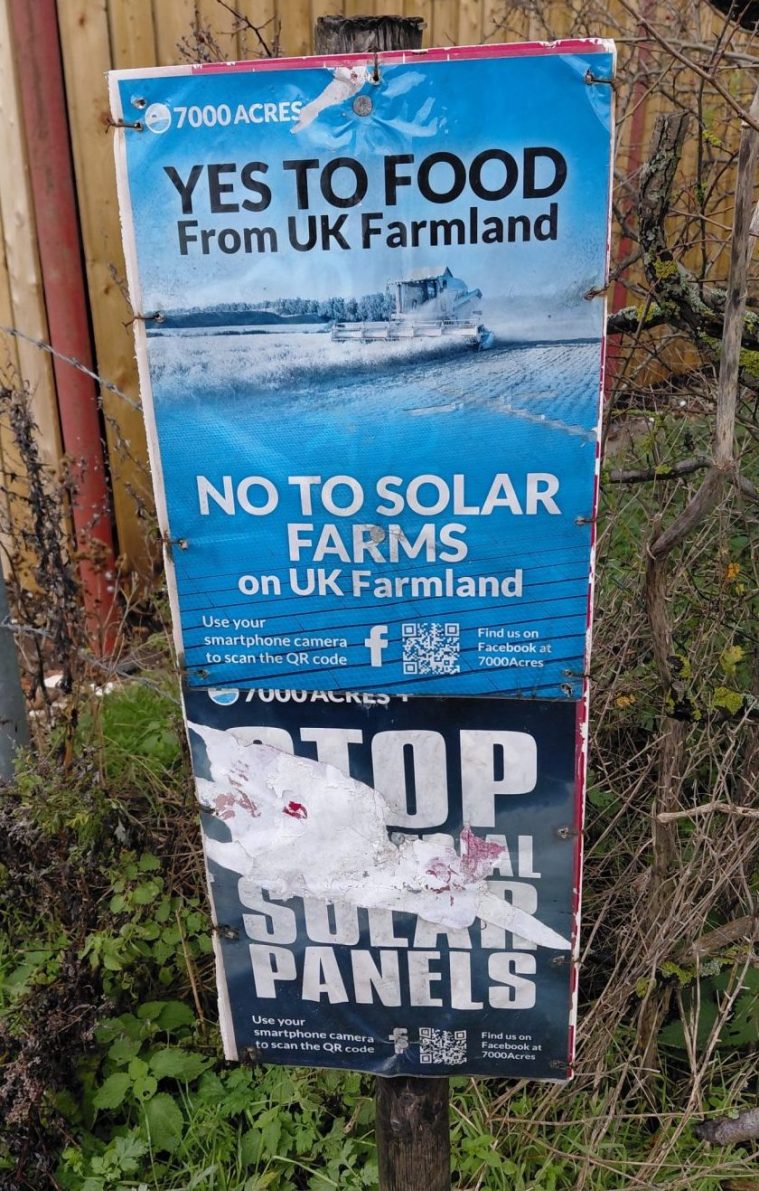 Signs opposing the solar farms are dotted parts of the Lincolnshire countryside (Photo: Joe Duggan/The i Paper)
Signs opposing the solar farms are dotted parts of the Lincolnshire countryside (Photo: Joe Duggan/The i Paper)
The cables would bring power to the Cottam power station, which was decommissioned in 2019, from solar panels near the village of Glentworth which is close to where the 3,000-acre Tillbridge Solar Farm will be located.
Once built, it will power about 300,000 homes, developers say, but some local residents have raised concerns about its scale.
“It has been massively upsetting for a lot of the people in the village. I think we need green [spaces] and we need much more sustainable [energy],” said Emily Rook, 36.
“It will be sad to lose all that green space, but then I also feel like that green space isn’t going to be able to survive at the rate that our world is going.”
Another local resident, who wished to remain anonymous, said: “I am not in any way opposed to finding alternative power sources. I don’t think anybody in the village is.
“I think there are real issues about scale. It’s unregulated in that it’s been handed out entirely to the private sector. So it’s in their interests to maximise what they feel to be their return.”
Your next read
Sandra Butcher, 71, said: “It’s spoiling the countryside, because most people come to a small village like this to be able to walk out and see wildlife and fields and nature, not to look out on solar panels.”
Another local resident, who wanted to remain anonymous, said: “There’s owls and stuff like that.
“If you put silicon panels for miles and miles around here it will destroy nature. You’re changing the habitat.”
